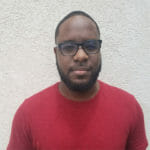In this #mtpcon Digital APAC keynote, product discovery coach Teresa Torres unpacks some of the ideas behind a cross-functional team-based approach to continuous product discovery.
Watch the video to see Teresa’s talk in full (Mind the Product members can also watch the recordings of all our #mtpcon Digital APAC talks here). Or read on for an overview of her key points.
Teresa starts by emphasising the difference between discovery and delivery — product discovery is deciding what to build while product delivery is the building and scaling of a production-quality product.
Over the last 10 years there has been a rapid evolution of discovery practices, with a lot more teams interviewing customers, running experiments, testing their assumptions, running usability tests and doing more rapid prototyping. However lots of teams still take a project approach, Teresa says, which means that they may undertake some initial research and then rely on that research for the rest of the project. But the world is constantly changing, so continuous discovery is a better approach. Teresa says that often teams may think they’re doing continuous discovery but they’re approaching it with a project mindset.
What does continuous discovery mean?
Teresa defines continuous discovery as:-
At a minimum,
- weekly touchpoints with customers
- by the team building the product
- where that team is conducting small research activities
- in pursuit of a desired product outcome.
Weekly touchpoints with customers
We make product decisions every day, some big and strategic, some pedestrian, but all would benefit from customer input so that we make the decisions that work for them. It avoids a validation mindset, it means that we don’t miss out on early feedback and can move to more of a co-creation mindset with customers and therefore better products. Weekly input may sound overwhelming, so Teresa suggests adopting a continuous improvement mindset, looking at the incremental improvements you can make each week. “Think of this as a benchmark to aspire to,” she says, “I’ve worked with hundreds of teams that have successfully found this cadence.”
The team building the product
This starts with the idea of the product trio — product manager, design lead and tech lead all working together, as opposed to older, more waterfall-type models. We know that the best teams work as what Marty Cagan calls missionaries, they work together to deliver a mission, and this is what the product trio concept is all about, Teresa says. She explains that she often gets pushback when she suggests how the trio should work together and how she overcomes that. She also talks about the involvement in discovery of other people on the team, like data analysts, user researchers, and product marketers, but recommends that discovery starts with the product trio in order to move quickly and get quick decisions. “The trio can flex, but know that you’ll trade inclusivity with speed,” she says.
Small research activities
Small research activities are key to unlocking a continuous discovery cadence, similar to the Kanban idea of limiting work in progress and the Agile principle of working in small batches.
Desired product outcomes
Teams can forget their job is to deliver value to the customer, Teresa says. Research activities must be in service of driving the product outcome, because the product outcome creates customer value in a way that also creates business value.
The Opportunity Solution Tree
Teresa then explains her Opportunity Solution Tree framework. She explains the difference and connection between business outcomes, which tend to be financial metrics, and product outcomes, which tend to be measures of customer behaviour.
Define a clear desired outcome
“If you work at Netflix, a business outcome might be gross subscriber revenue,” she says. A product outcome at Netflix might be something the product team can influence to encourage subscribers to spend more money on their subscription or renew subscriptions. Engagement metrics and numbers of shows watched would be metrics that the product team can influence to drive a business goal. This clarity is important, says Teresa, because it’s where the business team gets to negotiate with Product and communicate where they want Product to focus in order to drive business value. The product team can then translate this into a product outcome that’s appropriate to the span of their work.
Discover opportunities to drive that desired outcome
An opportunity means customer needs, pain points or desires. It’s a powerful concept, says Teresa, because in a lot of companies there is a tension between business needs and customer needs. She cites online newspapers where readers have to wade through a series of adverts before they get to the article they’re looking for as one example of this tension. “If instead we start with the business need and ask what are the customer needs that could drive that business need, we reconcile that tension immediately,” she says, “and we still stay customer centric.”
Discover solutions that deliver on those opportunities
Most teams Teresa meets are good at discovering solutions – A/B testing, lean startup, usability testing all are centred around discovering solutions.
Continuous interviewing
Teresa then talks about how a team best works through this process. A collaborative approach with a shared outcome is critical to its success. Interviewing should be continuous and generative, in order to collect customer stories and discover opportunities rather than solutions. “The biggest barrier to interviewing every week is recruiting. Most of us interview in a project mindset. The key to unlocking a continuous cadence is to automate the recruitment process,” Teresa says, and there are three ways you can do this:-
- Recruit people who visit your site
- Define triggers for support teams: Enterprise businesses can use their customer facing teams to help them recruit.
- Customer advisory board: Some businesses are genuinely hard to recruit for, says Teresa – and she’s worked with companies whose customers are investment bankers and US movie studies – but you can still automate the interview process by setting up a customer advisory board.
Then you need to make sure you ask the right questions, and this is where the team model is very important. You should avoid speculation, and focus on collecting stories. You’re listening for opportunities in those stories so that you can map out the opportunity space. You then need to work on multiple solutions for the same opportunity, and the more people you have involved here the more diverse your ideas will be, Teresa says. She cautions against working on one idea at a time as this sets you up for confirmation bias. “You want to test sets of solutions that target the same opportunity and look for a clear frontrunner,” she says.
Next you need to break these sets of solutions into underlying assumptions and rapidly test those assumptions. Ideas are based on the set of assumptions that things are desirable, viable, feasible, ethical and usable, says Teresa. “The more diverse your team is, the more likely it is you’ll catch your riskiest assumptions,” she adds, “this is definitely an area where you want the whole team involved.”
Teresa is about to publish a book, Continuous Discovery Habits, on this topic. For more information visit www.continuousdiscoveryhabits.com













